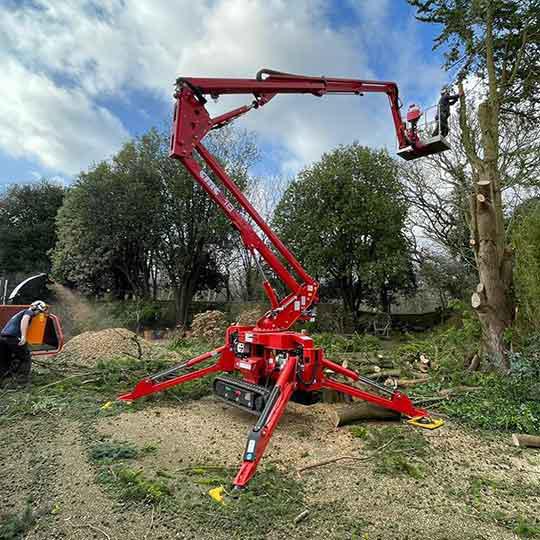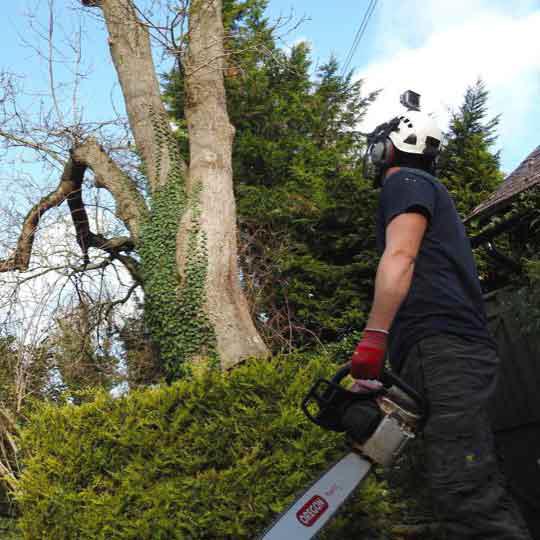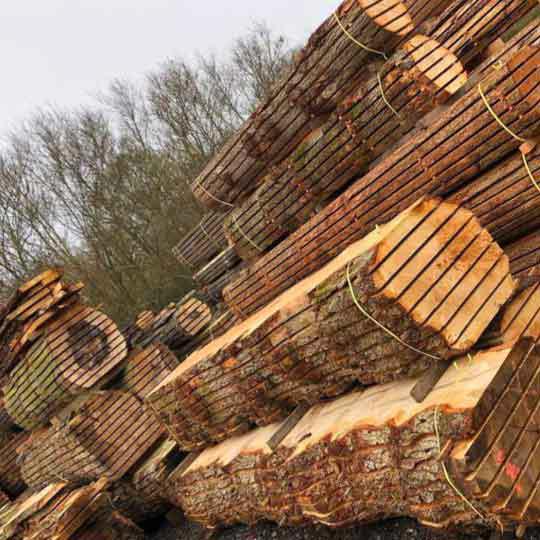










































































We have had a mixture of weather recently, with cold bright sunny days, as well as some breezy wet days. What do you think our Spring and summer will bring us this year? Last summer was pretty good, so I am ever hopeful (as always) that we once again we will be able to bask in the sun and enjoy some alfresco dining. For now, we can marvel at the snowdrops (my all-time favourites), the bluebells, tulips and golden / white delightful daffodils. Gorgeous.
Do you have a spring clean to do? Do you want to change the décor? We did a spot of redecorating ourselves this week. Do you need a carpet cleaned, a tidy of the garden, a new blind for the kitchen, or new windows? Well, our wonderful advertisers here can help you! Take a look through your local magazine and see who you can call to ask for advice and get them to come to you or visit them at their place of work and then let them do the work for you. That is what they are here for.
If you have a summer fete coming up, a barn dance, a community picnic in the garden, a local sing-song or amateur play to perform, please let us know as we can promote these for you for free. Anything which is local and has the purpose of bringing people together we want to support. Let’s get to know our friends and neighbours and create some social time. It makes all that working so much easier and gives us things to look forward to.
Happy March to you all!
Debbie, Stephen & all of us here at Modern Magazines

DISCLAIMER: Whilst every care has been taken to ensure the data in this publication is accurate, the publisher cannot accept any liability to any party to loss or damaged caused by errors or omissions resulting from negligence, accident or any other cause.














The John Thornton Young Achievers Foundation is fast approaching its 15th Anniversary and the first event to mark the occasion will be a Vintage Afternoon Tea at the Barrington Centre, Ferndown on Saturday 22nd April.

Guests will enjoy dainty sandwiches, scones with jam & Rodda’s Cornish Clotted Cream, cakes and little sweet treats, together with unlimited tea. Our thanks must go to Rodda’s for sponsoring our event.
A scrumptious afternoon tea is not all that is on offer, guests will also be treated to a nostalgic trip down memory with the fabulous ‘Land Girls.’ This talented duo is sure to get everyone singing along as they provide an uplifting 1940’s experience with songs from The Andrews Sisters to Vera Lynn and lots in-between. This is an event not to be missed! Tickets are just £12.50 per person, or £15.00 with a glass of Prosecco,

and available direct from the Barrington Centre. Buy yours today, or why not treat someone special?
https://barringtoncentre. co.uk/events
All proceeds will be supporting local young people, providing them with the financial help they need to achieve their ambitions and really develop as individuals. Enjoy a fabulous Vintage Afternoon Tea and support a great local charity in the process.

Looking back 60 years to Dr Beeching’s infamous axing of a quarter of the UK’s rail network.
Many of us know the name Dr. Beeching. He has become the track tyrant of a past generation – a man who heartlessly cut a blade through communities in much the same way the rail lines he decommissioned had done through countryside and rural towns.


History will show that the publication of his first report, titled The Reshaping of British Railways, on March 27th 1963, some 60 years ago – and a follow-up two years later – sounded the death knell for a quarter of the UK’s railways, and disconnected overnight a number of towns, villages and hamlets from their neighbours.

In many ways Beeching became the punchbag for arguably one of UK transport’s most sensationally unpopular moves, yet was the label unfair? After all, the railways were in deficit to the tune of up to £100million a year – a wholly unsustainable mass of loss-making lines which were rapidly finding the marvellous motorways a formidable form of competition, as motorcars and freight trucks took footfall away from the trains. Hence, by the time Beeching – a physician and engineer with ICI – was appointed as British Railways chairman in 1961, the network was already in dire straits.

What’s more, the closure of routes had already been happening long before his weighty


report landed with the Ministry of Transport. Three thousand miles of lines had been axed since 1948, so while these new proposals were the most severe yet, they weren’t the first.
A good number of the 2,363 stations and 5,000 miles of track earmarked in the report for closure were in fact given a reprieve, such was the political, social and economic pressure the government found themselves under; and there were also positive recommendations in the report which, for the first time ever, documented a country-wide view of the railway system, and brought about firmer management of lines, operators, passenger welfare and general demand.
Wind forward to today and investment in our railways has never been greater. Network Rail has also worked hard to reinstate rural and local railways - at present there are over 60 Community Rail Partnerships in operation. Not only are these important to the communities they serve, but profitable too!
greater. railways
While it still has a long way to go, Britain’s railway network is once again the fastest growing in Europe and busier now than at any time in the past hundred years. The question has to be asked if this is because of, or despite, the infamous Beeching.
Highly Competitive Prices for Both Domestic & Commercial Work!



We are a family run business, established in 1956 based in Dorset. We pride ourselves on having over 60 years’ experience, spanning 3 generations which allows us to provide our customers the assurance of knowing their projects are in capable hands.



























Via a galaxy far, far away, film star John Boyega is back within a few miles of where it all began - Peckham’s hottest property has been subtly talking up an Attack the Block sequel, something which reveals a few things about the 30-year-old social justice champion.


For many cinemagoers, John Boyega’s unveiling to mass popular culture was in the opening shot of the very first teaser trailer for 2015’s Star Wars: The Force Awakens, which attracted a recordbreaking 58 million YouTube views in its first week.
Past that, Boyega has strengthened his allegiance to the Star Wars brand in almost every way possible, as well as finding time to tread the boards, effectively making a
return to where his acting career started, describing his 2017 appearance in Woyzeck as “like riding a bike”.
“You’re on the stage and suddenly the lights are on and there’s an audience either clapping or throwing tomatoes at you,” he begins. “You have to adjust from being on a film set as there’s only one take!”
Boyega now looks to take that reconnection even further with the much talked-about return of Attack the Block, which came before Star Wars, albeit to a much more limited audience. The original 2011 sleeper hit became a cult film and launched both his and director Joe Cornish’s careers.
It’s therefore with some element of sentimentality, perhaps, that the multi-millionaire actor accepts the invitation to do it all again, at a time when his public profile suggests he should be doing something more status-driven.

“There is a romantic element to this, I don’t deny it,” he says. “You always want to reignite how the past feels, and it
gives you some perspective and appreciation of how far you have of come.
“No-one is doing this just for kicks. We are serious and we want to create something that isn’t just part of a sentimental journey. And it will be good. Better than good!”
Boyega’s return to the council estate also belies a growing reputation that he has become a stereotypical mouthpiece for a minority. “The things that matter to me – racism, equality, fairness – have mattered to me all my life,” he explains.
“I have never removed myself from who I am or what I stand for. What I do think is that the media are very good at painting you in one light, and that can be the go-to headline for everything you do.
“I don’t want to be that person,” he admits. “Sure, I want to champion equality, but that is not everything I stand by and stand for, and I think most people who know me, know that.”





Of late the media are reporting the latest disruptions within housing markets. Local Estate Agencies tell me they have had to revert to actually selling even good quality properties. When we came to Malmesbury Road, St. Leonards, late 1976, they told us it was “a much sought-after area”, and thus it seemed to have remained ever since. However over recent months, given comparison with prices offered for three-bed bungalows mid-2022 and one now on offer (February 2023), asking prices seem to have dropped to about £550,000. It is not that long since prices for such properties was around £650,00 and were soon “under offer” and then “sold”.
Of late the media are reporting the latest disruptions within housing markets. Local Estate Agencies tell me they have had to revert to actually selling even good quality properties. When we came to Malmesbury Road, St. Leonards, late 1976, they told us it was “a much sought-after area”, and thus it seemed to have remained ever since. However over recent months, given comparison with prices offered for three-bed bungalows mid-2022 and one now on offer (February 2023), asking prices seem to have dropped to about £550,000. It is not that long since prices for such properties was around £650,00 and were soon “under offer” and then “sold”.
This 1969 Ordnance Survey map is already out of date as to the actual situation at that time, most of the unoccupied areas seen here were by then occupied by new bungalows, each with a plot of at least one third of an acre, a stipulation established in the 1950s by Hampshire County Council. In addition, a building line 40ft back from the footpaths was also established, thus minimising the potential for infill in areas at the rear.
This 1969 Ordnance Survey map is already out of date as to the actual situation at that time, most of the unoccupied areas seen here were by then occupied by new bungalows, each with a plot of at least one third of an acre, a stipulation established in the 1950s by Hampshire County Council. In addition, a building line 40ft back from the footpaths was also established, thus minimising the potential for infill in areas at the rear.


The angled boundaries parallel to the A31 match plot divisions of Lord Malmesbury’s “St. Leonards Estate” when auctioned off in the late 19th century. That had extended from today’s Cedar Avenue to St. Ives End Lane and back to the AD 45 “Roman Road” line, at the time the southern limit of 3000 acres of North Ashley Heath and the vast Somerley Estate.
The angled boundaries parallel to the A31 match plot divisions of Lord Malmesbury’s “St. Leonards Estate” when auctioned off in the late 19th century That had extended from today’s Cedar Avenue to St. Ives End Lane and back to the AD 45 “Roman Road” line, at the time the southern limit of 3000 acres of North Ashley Heath and the vast Somerley Estate.
There are two survivors from the three 4 acre “villa” plots on offer in 1895 on the main road between today’s Cedar Avenue, then a dusty footpath, and Braeside Road, first gravelled up in 1906. On two such plots costing £123 “Braeside” was built by Harry Barrow in 1902, but now has little left of its 8 acres. Its name survives with that road, but its drive down to its lodge was lost when the sole “infill” here was built by Lamberts. The house is thus no longer No. 1 Braeside, but No. 10 Malmesbury, accessed from the 1960’s cul-de-sac, mostly empty on the map. The c.1895 “Heather Mount”, has been a care home for many years, the “footpath” remnant down to the A31 still a “right of way”.
There are two survivors from the three 4 acre “villa” plots on offer in 1895 on the main road between today’s Cedar Avenue, then a dusty footpath, and Braeside Road, first gravelled up in 1906. On two such plots costing £123 “Braeside” was built by Harry Barrow in 1902, but now has little left of its 8 acres. Its name survives with that road, but its drive down to its lodge was lost when the sole “infill” here was built by Lamberts. The house is thus no longer No. 1 Braeside, but No. 10 Malmesbury, accessed from the 1960’s cul-de-sac, mostly empty on the map. The c.1895 “Heather Mount”, has been a care home for many years, the “footpath” remnant down to the A31 still a “right of way”.
The local Parish Council were successful in pursuing breaches of such relics of the past. Gates had been provided here, regularly used for at least 20 years by residents walking their dogs or accessing the bus stop nearby, so it survives today.
The local Parish Council were successful in pursuing breaches of such relics of the past. Gates had been provided here, regularly used for at least 20 years by residents walking their dogs or accessing the bus stop nearby, so it survives today.
The remainder of the area had been mostly divided into one acre plots, each accessible from today’s Cedar Avenue, Braeside or Woolsbridge Roads. Many of these boundaries remain identifiable today.
The remainder of the area had been mostly divided into one acre plots, each accessible from today’s Cedar Avenue, Braeside or Woolsbridge Roads. Many of these boundaries remain identifiable today.
The northern half of our road had been built early 1960s, as part of the 1950s development of Cedar Avenue and the western end of Heather Close. Today electrical services here are still supplied by overhead cables, offering a clue when dating properties in our parish.
The northern half of our road had been built early 1960s, as part of the 1950s development of Cedar Avenue and the western end of Heather Close. Today electrical services here are still supplied by overhead cables, offering a clue when dating properties in our parish.
When Mrs. Oakenfold, owner of “Braeside”, placed her southern plots up for sale in the 1960s, two houses first appeared on the central corner. Apart from Plot 6 in 1967, a private deal was struck with builder Les Graham for No.1. He also built and moved into No.8 next to the House, and apparently built the rest in 1968.
When Mrs. Oakenfold, owner of “Braeside”, placed her southern plots up for sale in the 1960s, two houses first appeared on the central corner. Apart from Plot 6 in 1967, a private deal was struck with builder Les Graham for No.1. He also built and moved into No.8 next to the House, and apparently built the rest in 1968.
Average price at the time appears to have been of the order of £7,500, matching the prices “from” quoted for Oaks Drive in 1964 when we had a look en route to Bournemouth (in those days no Spur Road, so via Ferndown), never thinking that we would eventually move here for my third job at Poole Quay in the yachting industry.
Average price at the time appears to have been of the order of £7,500, matching the prices “from” quoted for Oaks Drive in 1964 when we had a look en route to Bournemouth (in those days no Spur Road, so via Ferndown), never thinking that we would eventually move here for my third job at Poole Quay in the yachting industry.
Builder George Wells had bought the sites for Nos. 2 and 4 in the late 1970s, later developing more in the nursing home cul-de sac, by then at a going rate of around £30,000.
Builder George Wells had bought the sites for Nos. 2 and 4 in the late 1970s, later developing more in the nursing home cul-de sac, by then at a going rate of around £30,000.
Average prices for similar properties when the rate bands were reviewed in 1991, and we were assessed as Band E, values now above £120,000. Early 2000s, the already extended home of a new resident queried its Band F assessment, her neighbour only being Band E. Typical of “jobsworth” reaction at East Dorsetput everybody else up to Band F. My attempt to challenge the new rate was unsuccessful, as most other recent three bed bungalows were now assessed at that value or more.
Average prices for similar properties when the rate bands were reviewed in 1991, and we were assessed as Band E, values now above £120,000. Early 2000s, the already extended home of a new resident queried its Band F assessment, her neighbour only being Band E. Typical of “jobsworth” reaction at East Dorsetput everybody else up to Band F. My attempt to challenge the new rate was unsuccessful, as most other recent three bed bungalows were now assessed at that value or more.
The “desirability” of our road remained high, but as a retirement area there was the problem that, as residents get older, they need care and attention … or just pass away In many cases we have seen the arrival and departure of new occupants up to five times in some properties. As a result, since 1976 my wife and I have thus become the oldest residents, not just in time but also in age
The “desirability” of our road remained high, but as a retirement area there was the problem that, as residents get older, they need care and attention … or just pass away. In many cases we have seen the arrival and departure of new occupants up to five times in some properties. As a result, since 1976 my wife and I have thus become the oldest residents, not just in time but also in age.
Fortunately we are both still in good physical and mental health. In my case, studies of local areas and property histories are similar to all of the above. Next month I plan to cover some of my recent problems of doing so back into the 17th and 18th centuries, but other than in our area.
Fortunately we are both still in good physical and mental health. In my case, studies of local areas and property histories are similar to all of the above. Next month I plan to cover some of my recent problems of doing so back into the 17th and 18th centuries, but other than in our area.
Contact me at home on 01202 875512
JOHN HAWKINS

He’s a brilliant presenter, accomplished gardener, talented novelist, and allround horticultural inspiration. This month, Alan Titchmarsh discusses garden design and spontaneity.

They say that a builder’s home is always unfinished, and much the same is true of any gardener in regards to his or her outside space.
We have been in our current home for almost 20 years, and I am still evolving, adding, altering – every day. And that’s what makes each passing year so special – the fact you never go back to a blank canvas, but each spring there are new opportunities, ideas and spaces that emerge here and there, that can be formed into whatever takes your fancy at that particular time.
While variety and versatility are definitely important in a garden, I do find it’s necessary to follow some familiar boundaries. One
of those, for me, is to ensure the inspiration for the style of my garden comes from the feel of my house, and I think this is true for any

outside space. The two must complement each other or you may find you end up with an awkward juxtaposition between the building and nature.
So my property is a classic, square Georgian farmhousethus I felt I had to do something that complemented that in the garden. I like straight lines anyway, which cross each other, and have softened this by planting throughout, creating a sort of billowing chaos in beds and borders. You essentially have one giving structure to the other.
Remember, gardening is very different to
architecture, because what you are dealing with isn’t just shape and form, it’s time as well –it’s a rapid adjustment and change between how something looks on day one and how it will look on day 100.
And while I know you’ll hear gardeners talking all the time about planning out an area, the types of plants you’ll have, and the tone and feel of a space; very often the reality is you are inspired by something off the cuff, and it is that instinctive appeal that’s exciting.
Whatever you’re going to do in your garden space, I would suggest it is gradual and over time. It really pays to observe and watch how nature embraces things – see what grows and what outgrows, and only when you are absolutely sure you want to adjust a certain area, only then proceed.

It’s about a steady progression rather than the wholesale demolition… such is life!

Here at United Fencing Supplies we specialise in all types of fencing from domestic to industrial.

We stock a full range of timber fencing products including:



• Picket Fencing
• Closeboard Fencing
• Trellis and Overlap
• Closeboard Panels
We manufacture all of our own panels, trellis and gates so if you have any bespoke requirements please don’t hesitate to contact us.
With over 25 years’ experience we are confident that United Fencing Supplies is the right choice for your garden project.

I am a 3 year old Beagle Cross. I have come from the pound and my history is limited. I have clearly lived in a home before and have all the social graces. I walk quite well on the lead but would benefit from some further training. I like people, especially if they play ball with me. I have a selection of toys which I love to play with in my room. I need a lot of activity as I am a clever and energetic girl. I enjoy meeting other dogs on my walks and had a friend here who I played with on the field. I am looking for an active home – I’m a busy beagle and typical of my breed.

If you are able to offer me or one of my lovely friends a forever home or a foster home
Please contact our office on: Tel: 01202 875000
Email: admin@waggytails.org.uk
or visit our website : www.waggytails.org.uk
We also have lots of other dogs looking for their forever homes.
Waggy Tails Rescue are in need of more foster homes. If you are at home most of the time, have a secure garden an experienced with
dogs then please give us a ring and discuss fostering for us. It is a very rewarding experience and enables us to continue helping these dogs.
(No children under 10 in the house please.)
Waggy Tails Rescue is a registered charity based in Dorset, we rescue and rehome dogs that have been abandoned, neglected or otherwise in need of a new home. We also find homes for other small furries that may be in our care, so to find out more you can contact us on the number above or send donations or letters to:
Waggy Tails Rescue

Helen’s House
143 Magna Road
Wimborne
BH21 3AW
Thank you for supporting us!






















Welcome to the March Stargazing Page. Highlights this month include a close meeting of the brightest planets in the Solar System and Orion the Hunter still visible high in the southwest.
The ISS can be spotted early in the morning until the 11th. Viewing then switches to our evening skies from the 16th. To establish exact timings please refer to www.heavens-above.com or a similar webpage for up-to-date information, remembering to set the location to your observing area.
Venus and Jupiter appear extremely close to one another (known as a conjunction) in the early evening western sky. The closest they reach is on March 1st, after which the planets will slowly separate. This conjunction can easily be seen with the naked eye, but a pair of good, steady binoculars may allow you to spot some of the moons of Jupiter.
The start of longer daylight hours commences on March 20th at the Spring Equinox. This marks the first of two dates (the second being the Autumn Equinox) when daylight hours equal the number of night-time hours, wherever you are on Earth (equinox comes from the Latin meaning ‘equal night’). The equinoxes are the best time of year to determine the main compass point directions relative to your own home, as the Sun rises due east, sets due west, and is due south at midday. Try remembering these positions relative to a building or a tree.
Moon
March’s full moon occurs on the 7th.
The innermost planet is too close to the Sun to be seen this month.
Venus
Venus continues to dazzle in the southwest every evening and will be impossible to miss! At the start of March it sets around 8.30pm, but by month end it is sinking below the horizon as late as 11pm. It is close to the Moon on the 23rd and 24th (see figure).
Mars
The red planet can be seen above the constellation of Orion until the early hours of the morning, and although getting dimmer every day, is still a bright object.
As the Sun sets, Jupiter is visible low towards the southwest. By the end of the month it will be lost in the Sun’s glare. Saturn is too close to the Sun to be visible this month.
Diagonally across from Rigel, February’s Star of the Month, we find Betelgeuse, the tenth brightest star in the sky. It marks the right shoulder of Orion the Hunter, and its name stems from the Arabic for ‘hand of Orion’ (see figure). It is a red supergiant that is much cooler than our Sun; its surface temperature is 3,500°C. Betelgeuse is an enormous star at the end of its life, and if it were to replace our Sun at the centre of the Solar System, its surface would extend to at least the orbit of Mars. Put another way, if the Sun were the size of a grapefruit, then Betelgeuse would be the size of a large football stadium. Like Rigel, it will end its life in a giant explosion known as a supernova, leaving behind a neutron star or a black hole. On a night with no moon, see if you can notice that Betelgeuse is noticeably more orange than nearby stars.




















The past 3 years have seen more than their fair share of challenges. The pandemic, Russia invading Ukraine and the subsequent supply issues and increase in inflation (now described as the “cost of living crisis”). The human cost has been tragic on many levels and will never be forgotten. Generally human kindness has shone through but can the same be said from businesses? Going forward, what can businesses learn and what should you expect from them?
I feel very fortunate that the industry I work in has been able to continue and be relatively unaffected by lockdown initially and subsequently the inflationary pressures from suppliers. Having said that, the volatile investment markets have created uncertainty and worry for investors and our clients have needed our advice and guidance more than ever. I have a huge amount of sympathy for businesses who were unable to open, or those in industries which have seen a dramatic drop in demand for their services. But I have also been very frustrated by businesses who seem to have forgotten the importance of their clients be it delaying refund money, poor service or now increasing prices beyond what is reasonablefundamentally taking advantage of their customers.
1. Our Client Charter states: “We will always look after your best financial interests and treat you fairly”. We never forget that and are on your side!
2. Local, accessible office. The pandemic has shown that we can deliver our service remotely when necessary, and it works. However, for the majority of our clients (aged 50 plus) face to face advice is preferable and having a local office is critical in delivering that service. At a time when most financial institutions are closing offices to save money (aka increase profits further), we focus on what our clients want and need.
3. High quality, independent financial advice. Stewart and I are both Chartered Financial Planners and Fellows-the highest qualifications in our industry. We have many years of experience and deliver impartial advice due to our independent adviser status. We often work with our client’s own accountants and solicitors to deliver joined-up
advice, and we are SIFA Pro members (SIFA is affiliated to the Law Society).
4. Access to world class investment management. Our independence is the key. We act as the informed buyer for our clients, filtering the myriad of investment products & providers through a robust due diligence process. Our clients benefit from us offering best of breed investment solutions from a wide range of highquality financial institutions. This helps reduce charges to our clients as we aren’t obligated to use any specific provider products.
5. Integrity and trust. We never take your trust for granted, nor the responsibility you place in us to manage your money and provide suitable advice. This is a serious business, and we treat it with the attention and importance it deserves. We are “Dementia Friends” and in March 2021 we won “Best Adviser Firm for Vulnerable Client Care” at the National Professional Adviser Awards. We are an FT Adviser Top 100 adviser firm.
6. Excellent, attentive personal service. Our clients are individuals with varying demands. We are able to deliver a very personal service to all of our clients and aim to impress. Our Google reviews provide evidence of our high standards. What can you expect from us? Integrity, trust, reliability and value. Do you feel every business you work with offers you the same?
My colleague Stewart Sims-Handcock and I are available for a free initial, no obligation chat to discuss your personal requirements, and would be delighted to help.

Howard Goodship is an Independent Financial Adviser with Lonsdale Wealth Management, 5 Fridays Court, Ringwood. Tel: 01425 208490 www.lonsdaleservices.co.uk
The value of an investment and the income from it could go down as well as up. The return at the end of the investment period is not guaranteed and you may get back less than you originally invested. The contents of this article are for information purposes only and do not constitute individual advice.









I think you know how much we love the sea and outdoor living. Well Daichi was very generous last month and booked us a trip on the MSC (Mediterranean Shipping Company) cruise line, the Grandiosa! We have never been on a ship so big. Oh my, there are enough rooms for up to 6000 passengers as well as several thousand crew. It is magnificent with shops, a chocolate cafe, where they make their own chocolate, restaurants, spa, two theatres, bars and an ice-cream parlour, which of course we had to try… after all it is competition to our own ice-cream and waffle parlour in Weymouth, Wafflicious! I think I am getting a little over excited there… But really it is a splendid vessel. The crew are incredible. From all over the world and each has their own story.
We flew to Rome and got a taxi to Civitavecchia an hour away, where the port is. Staying overnight is a good idea as it takes away the stress of travelling, we find. Especially as this time we were in the plane for three and a half hours before we took off! Better to be safe than sorry though, I would say.
We had a leisurely morning, including coffee and a pain au chocolat at a local bijoux cafe. Just had to be done - we really were now on holiday. Once we were through customs and all the checks were complete, we very excitedly found our cabin and dropped our hand luggage off. The big cases were taken on board
by a crew member. We were on the thirteenth floor! Balcony and all. At 5pm off we set. You can hardly tell you are moving, but at night, being so high up there was an unusual side to side motion which I actually found quite soothing after I got used to it.

Palermo in Sicily! Our first stop. Having never been here before it was a delight to see. Stephen and I decided to take our own tours. The ship does provide great excursions, but we wanted to be independent. Google not only tells you where you can go but also how long it takes to walk there, so we (well actually Stephen) were able to work out exactly what we could do and how much time we had. We walked all the way around the centre of Palermo. The twelfth century cathedral is splendid. The horses and carts are delightful. The Massimo Theatre is glorious. I could really feel the splendour, opulence and dramatic setting of this magnificent Italian town. We so enjoyed our walk, gazing in awe, and of course the coffee sitting in one of the narrow streets complete with small, elaborate balconies and music you could almost hear from times gone by.
Malta was our next stop. After an evening of dining and on-board entertainment, we slowly and majestically arrived at our next destination. My dad was in Malta as part of his two-year conscription many years ago. There is a concept… compulsory enlistment, in his case, into the Royal Navy at the age of eighteen. He remembers it well. Today the
 An ice-cream sundae... Grandiosa style!
An ice-cream sundae... Grandiosa style!
area has many museums and artifacts in memory of the second world war. There are even hidden underground passages you can now visit, that were once used by important military leaders and politicians. Lots to do. We chose again to take our own path and in fact we walked over 20000 steps that day! A glorious walk around Valletta with fantastic views across the bays. The new square surrounded by street food vendors and a really attractive fountain were in contrast to the military background and gave you hope for the future.
A day’s sailing was next on the agenda! We chose to have a spa day and watch a movie while we glided our way through the deep waters of the Mediterranean. So relaxing.
Barcelona in Spain was our next destination. My parents had their honeymoon 59 years ago in this amazing city. As I was born early and 3 weeks less than nine months later, I do laugh and say, “I was made in Barcelona!” La Sagrada Familia is quite a feat. I thought there were building new on top of old and was dismayed, however that is not the case at all. It is still not complete and is the largest unfinished Catholic church in the world. Started in 1882. The new architecture is looking quite splendid and complements to older stones well. I always remembered that mum and dad went to a bull fight all those years ago, so a walk to Plaza de Toros Monumental de Barcelona was a must for me. It is quite an eerie place really. You can walk in the footsteps of both the matadors and the bulls, as well as enter the ring itself. Cultures change and it is interesting to see old traditions and look back on history, where we were and where we have come from.
The next time we got off the ship was at Genoa! Another unknown town to us and one we really

enjoyed walking around. We did not go in the huge aquarium there, but I hear it is highly recommended. Did you know (a bit controversial) that ‘our’ St George’s flag was apparently ‘stolen’ from here? We saw the flag a few times, flying high, and according to Google… “The symbol was adopted by England toward the end of the religious wars, in the 13th century with our ships flying the flag of Genoa as a deterrent to enemies.” Oops… Again, how interesting our history is.
Well, it was time to take our last cruise back to Rome. On disembarking we had a day to explore. Sitting, overlooking the Colosseum having an Italian lunch was awe inspiring. It ended our eight-day, seven night break on a high.


Sailing is not for everyone and certainly I would generally prefer a smaller ship, but we thoroughly enjoyed our self-generated European excursions, coffees in places we had never been before, nights singing to Abba, Italian Opera and the Addams Family in the all-inclusive entertainment each evening. Waited on hand and foot in the restaurants and having as much food as you want in the buffet. We love cruising. Let’s see if Daichi can top that this coming month!
By Debbie Corney A bull’s eye view inside the MonumentalHow our perception of diesel has changed over time, and why this final downward turn seems to finally be sounding the death knell for the petroleum product once labelled ‘wonderfuel’.
In the 1990s, life was beautiful for diesel. Engine technology improved with every passing year; and while fuel prices were low, supply was buoyant and, as a result, the popularity of this petrol derivative boomed.
The ‘wonderfuel’ revolution permeated the mass market of car production. Rather than an earthy, dirty oil that was once only associated with trucks, coaches and industrial machinery, diesel had funnelled itself through a centre space of transport where it propelled the ambitions of family cars, nippy run-arounds and souped up superpowered showpieces.
The boom has been down to the realisation that costeffective performance wasn’t just something that should be exclusive to the commercial vehicle operator, and cars such as the Audi 100 pioneered electronic control of the diesel engine for the first time. This advancement did huge things in terms of emissions, refinement and power; with the engines themselves benefitting from much greater power density thanks to tighter tolerance and improvements in fuel injection technology.
The marketing plan lasted a generation before the first chinks in the armoury were spotted. They arrived in
2015 and came bundled up as full-on warfare in light of the VW emissions scandal, although three years previously scientists spoke of the “silent killers” that particulate matter (PM) and NOx (nitrogen oxides and oxides) were proving to be.
Rapidly, diesel exhaust was declared a carcinogenic which put it in the same category as mustard gas and asbestos, causing lung cancer, and investment was backtracked. The Mexico City, Athens, Paris and Madrid mayors all pledged to outlaw diesel cars from city centres by 2025. Meanwhile London accelerated its commitment to low-emission

zones, as well as imposing strongly prohibitive toll charges designed to quell the diesel storm.

In 2023, the directive now is not to reconfigure, repackage or reduce, but to cease the production of diesel vehicles altogether. After all, fuel and maintenance costs are far lower with EVs and hybrids – the vehicles have fewer working parts needing to be fixed or replaced – and while the global energy crisis is rapidly pushing up the cost of utilities, its price elevation is no worse than that of fossil fuels.

The death knell has sounded, and with it comes frustration that the promises of diesel’s longevity – where motorists would complete a life cycle of car purchases – have turned out to be false.









The UK’s cost of living crisis has seen the average household’s energy bill increase to around £3,500, as we experience the highest inflation rates in 40 years, so is it time to turn away from the oven and invest in one of these more energy-efficient cooking appliances?
With up to 10% of your energy bill spent on kitchen appliances, it follows that cooking with more energyefficient appliances could save you hundreds of pounds a year. Here we explore the most efficient alternatives, from the ubiquitous microwave to the humble slow cooker.

When it comes to hobs, much like your oven, gas is cheaper, but electric is more effective.
A lot of heat is lost into the room with gas, but the difference in cost makes the result negligible.


However, an induction hob is incredibly efficient because there is no energy lost around the pan (even electric ceramic plates waste heat), so if induction is an option, go for it.
Microwaves use up to 80% less energy than a conventional oven and cost as little as 8p a day to run. The downside of
course is what you gain in speed and convenience, you lose in versatility. However, it may be worth switching to your microwave when cooking vegetables, pasta and poached eggs, over boiling big pots of water on the hob.

It’s official, slow cookers are back in fashion, and with good reason. Not only have they been found to run on as little energy as a lightbulb, they are also great for feeding a family and can make tough cuts of meat such as beef shin and brisket tender and delicious.
They are also very hands off, meaning you can throw the ingredients in and leave it for hours!
A relatively new invention, air fryers are essentially small convection ovens, making them ideal for small jobs such as cooking frozen fish fingers for your child’s tea or heating up a small pie for lunch.
Also, as the name suggests, the air fryer makes superbly crispy chips with a lot less energy than the oven… and a lot less oil than a traditional fryer.

Pressure cookers can save a huge amount of energy compared to traditional cooking methods, simply because they get the job done so much quicker.
They also make cheap ingredients – low-quality cuts of meat, dried beans and pulses etc. – into meals fit for a king.
The one downside of the pressure cooker is that they take a bit of getting used to, especially as the pressure releasing process can be rather scary!





















Now that we’re moving into Spring, it’s the perfect time to think about making compost for our gardens, hanging baskets and window boxes.
Composting is great for the environment. It improves soil - helping to create healthy plants and reducing the need to water and fertilise. It’s easy to make, can save money and you only need a small outdoor space.
Dorset Council is offering compost bins at prices as low as £6 and there is an extra buy-one-get-onehalf-price deal (plus delivery). This is for a limited number of bins so hurry whilst the offer lasts! See getcomposting.com for details.




Free compost bins are also offered to schools. We offer up to two compost bins and two caddies, plus a visit from a team member. Visit dorsetcouncil/ recycle for more details.
Good things you can compost include teabags, plant prunings, cut flowers, vegetable peelings and fruit waste (add citrus peelings sparingly). You can also add cardboard eggboxes and scrunched up paper. These provide fibre and carbon and also allow
important air pockets to form in the mixture. Twigs, grass clippings and leaves can also be added, but they will take a long time to break down if large quantities are added at one time.
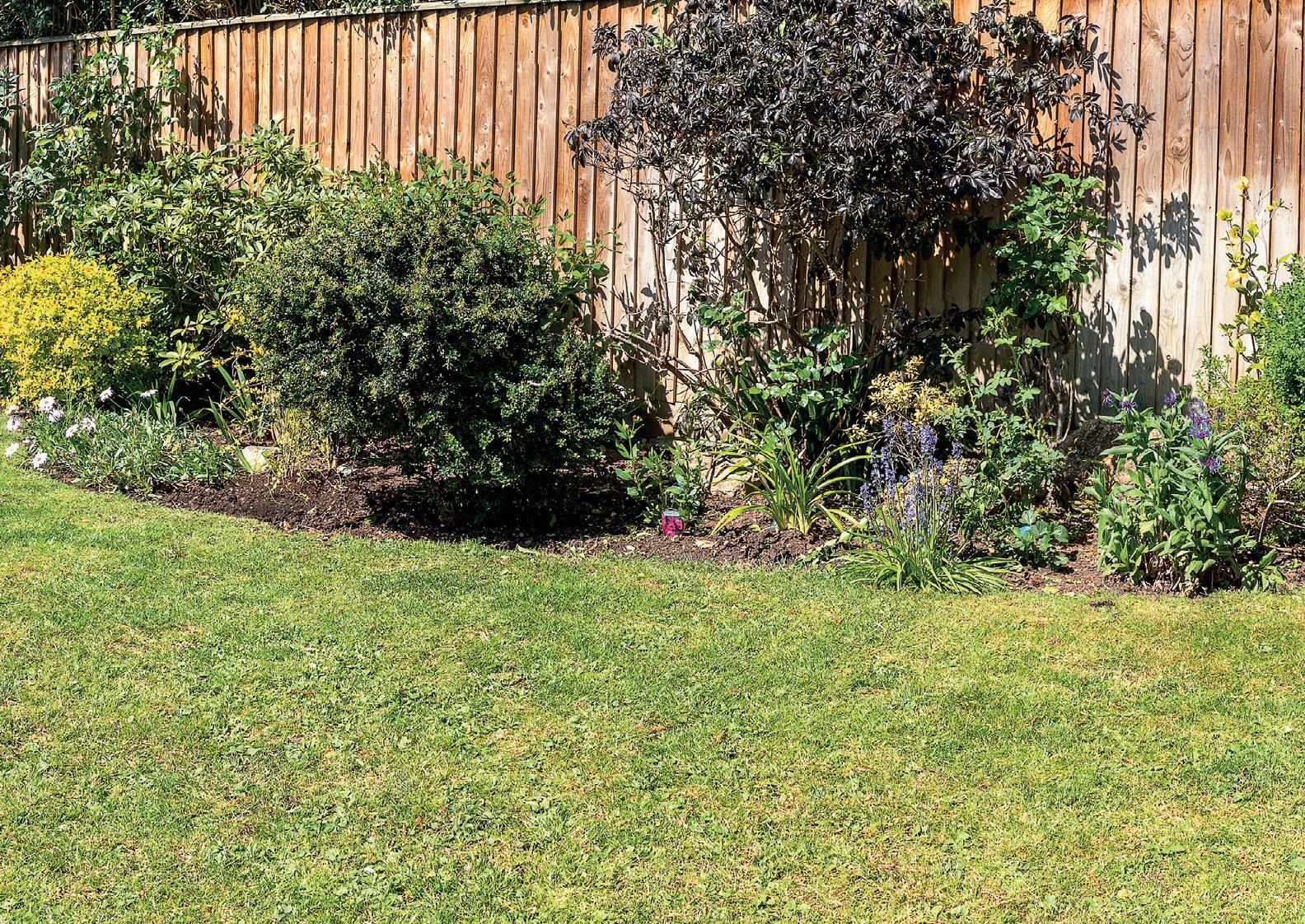
The compost is ready when it’s brown and crumbly. Dig into the soil in early spring or late autumn to improve the soil structure and act as a slow release fertiliser.













Designer, writer and television presenter, Kevin McCloud leapt into our consciousness with his vastly successful Grand Designs show on Channel 4. This month, the affable architectural business owner talks about his favourite room in the house.


I often get asked what I believe is the most important room in any building and my answer is always the same – it’s the toilet!

Now then, I know that’s not the most glamorous of answers, but think about it - you can make a house or a building with any number of rooms; you could create a home with no lightbulbs and perhaps not even a single window; yet without basic sanitation you could never remain there.
Without running water, you have almost no chance of survival without risking poor health, disease and, ultimately, death.
I’m seen the evidence of this, too. I’ve visited places in the world where running water and basic sanitation doesn’t exist; where the absence of those two things creates utter chaos and would eventually bring about the end of civilisation as we know it.
The point of all this is that in this world of ambition and desire, and in our pursuit of homely perfection, we can very quickly and very easily lose sight of the true basic necessities that enable us to evolve and survive as human beings.
It’s for that reason that someone moving into a shoebox studio flat in a grubby backstreet in a dead-end town can actually feel like they have achieved something monumentally big…
and they would be absolutely correct in that notion.
When you have somewhere that offers sanitisation, somewhere to eat, somewhere to sleep – you essentially have created the building blocks preservation of life. That’s tremendously exciting, very special and, rightly, the most rewarding feeling you can have.
In the coming year, we will all dream and plan and design… and do all those other things as far as the perceived improvement of our homes is concerned, and of course that’s the way we are as people – we are almost always forwardthinking and aspirational.
However, sometimes, it really is rewarding to take a step back – to look not at what you don’t have, but what you do have. It’s to say, ‘I am here, and I am covered’.
To have the basic necessities in life is actually 99% of survival and success… everything else on top is just decoration.












For March, four books that will entertain, engage and heal the soul.



When William meets Julia Padavano, a lively girl extremely close to her parents and three sisters, he quickly becomes a part of the close-knit Padavano family. Although cracks start to appear in the family, William never imagined he’d be the wedge to drive them apart.
A homage to Little Women, Hello Beautiful gorgeously describes family and sisterhood, mental health, and forgiveness, in such a way that you will never forget this story.
Published by Random House on March 13th

The Women Behind the Few by
Sarah Louise MillerThis is the little-known story of the Women’s Auxiliary Air Force, the women’s branch of the Royal Air Force in the Second World War, and the vital work they did behind the scenes to ensure the success of some of the most important missions of the war.
During the Battle of Britain, WAAF personnel worked in the radar network and the Dowding system, while across the Blitz, they operated with ground-controlled interception radar to aid Fighter and Bomber Commands in protecting Britain’s civilian population from German area bombing.
The list goes on, with this book aiming to recover missing
pieces of history, granting the WAAFs the recognition they deserve for their wartime contribution to British military intelligence. Published by Biteback on March 23rd
Finding the Words: Working Through Profound Loss with Hope and Purpose, is a powerful account of Colin Campbell’s navigation through unimaginable grief, with the author offering readers a vision for how to embrace and mourn indescribable loss, drawing on his personal experience of losing his two teenage children in a car crash caused by a drunk driver.
Finding the Words offers a vocal, lively path for processing pain and keeping memories of lost loved ones alive. Campbell
says, “I wrote this book in the hopes of making grief less frightening, mysterious, and lonely for those of us who suddenly find ourselves on this difficult journey.” Published by Michael Joseph on March 14th
International bestselling author Harlan Coben has been a tearaway on Netflix since his show Stay Close launched this summer, but it’s on the page that his stories are the most compelling – and his forthcoming novel is no different.
In I Will Find You, the worst tragedy strikes a family of three when their toddler goes missing – and all evidence points to his father, Will, having killed him.
So when his sister-in-law arrives five years later with a life-changing bombshell, Will is set on a mission to clear his name – and find his son.
Published by Penguin Books on March 14th




How to stay safe online by avoiding scams, whilst keeping on top of what data you share and with whom.
While technology has made many areas of our everyday lives considerably easier –online banking, shopping and navigation for example – it’s also made us more vulnerable, and often we can underestimate the lengths that others will go to in attempting to obtain our data.
Online scams to look out for Online scams are becoming increasingly sophisticated and even those of us who are skilled at using the internet can be caught out. Scammers sometimes send bogus emails in the hope that people will enter their personal or financial details.


Scam emails can look genuine and appear to be from official places, like HMRC or a bank, but you can often tell it’s a scam. Look out for:
• Errors in the spelling or grammar, or an unusual style of writing
• Requests for personal information, such as your username, full passwords or bank details - genuine organisations will never ask this
• Threats that unless you act now your account will be closed
Occasionally these emails will redirect you to a fake website requesting you to provide personal or financial information. For example, a fake bank website may be set up asking you to update your account or security information. If you have any suspicions, check the URL or type in the bank’s official web address.
Another way of parting you from your well-earned money is via social media or dating apps. Once a scammer has gained your trust, they’ll start asking for money, often by telling you an emotional or hard luck story. If a relationship feels odd, be wary.
How can I protect my data?
• Keep your passwords strong and change them regularly. Use

different passwords for different accounts, avoiding using words or dates that are personal to you and can be found on social media, for example your dog’s name and birth date!
• Install security software on your computer. Anti-virus software will look for and remove viruses before they can infect your computer, while anti-spyware software prevents unwanted adverts from popping up, and stops programs tracking your activities or scanning your computer for private data, such as credit card numbers or bank details.
• Protect your wireless network. Read the instructions that come with your wireless router to find out how to set up a ‘key’ (a type of password) so that no one else can access the internet through your router.
• Keep your device updated. Your device will be better protected from viruses if you keep the operating system updated. You should receive notifications when new updates are available, but you can also update your system manually.
Cyber security + data recovery



Tuition + general assistance


Faster internet + better WiFi


Anti-virus software
Old tech recycling drop-off



Famed for the gigantic, raspberrydusted meringues that adorn his shop windows, Yotam Ottolenghi is a patisserie expert, and these deliriously fudgy cookies are no exception.

(makes 24 cookies)
• 110g unsalted butter at room temperature, cubed
• 110g caster sugar
• 1 large egg, lightly beaten
• 125g plain flour
• ½ tsp baking powder
• 20g cocoa powder
• ½ tsp ground cinnamon
• ¼ tsp salt

• 100g 70% cocoa chocolate chips (or 100g dark cooking chocolate in 0.5cm pieces)
• 50g mashed banana (½ small banana)
• 170g pecan halves, finely chopped
• 100g icing sugar

1. In the bowl of an electric mixer with the paddle attachment in place, beat the butter and sugar on a mediumhigh speed until light and fluffy, then add the egg and beat to combine.
Sift the flour, baking powder, cocoa powder, cinnamon and salt into a bowl, then add to

the butter mix, beating on low speed for 15 seconds. Now beat in the chocolate and banana until combined, then transfer to the fridge for two hours to firm up.
2. Once firm, form the dough into 24 3cm balls, about 20g each. Put the pecans in a bowl, then drop in each ball, rolling it around to coat, which will press the nuts in as well, so they stick.

Put the cookies on a baking tray lined with greaseproof paper and refrigerate for at least an hour.
3. Heat the oven to 190°C/375°F/gas mark 5 and line two oven trays with baking paper. Put the icing sugar in a bowl and roll the cookies one by one in the sugar, pressing it in as you go, so it sticks. Arrange the cookies on the trays 2-3cm
apart, then flatten them to about 1cm thick.
4. Bake for 10 minutes, then remove: the cookies will be soft to the touch. Leave to cool for 10 minutes, then move to a rack. Serve warm or cool.
Maintain that fudgy factor by ensuring you don’t overbake these cookies.
You can also freeze them for up to three months once you have rolled them in to balls. Simply add one extra minute on to the baking time when you are ready to use them.





































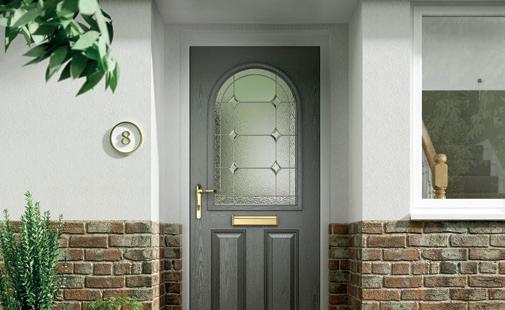



Wet weather can really dampen your mood, not to mention interfere with your fashion plans. Here are some waterproof ways to keep on trend when the dark clouds loom.

If you’ve ever worn bootcut jeans or flares, you’ll be familiar with how the loose bottoms drag in puddles and take half the pavement grime home with you. In other words, stick to slim fitting trousers like skinny jeans or leggings tucked into boots. Similarly, a long skirt is going to hold water, so go for something above the knee that you can wear with tights.

Choose high-tech over high fashion
High-end brands like such as Burberry have long been feted for their statement rain macs, but what works on the catwalk doesn’t necessarily work on the school run.


Fortunately, technology enhanced fabrics have been a big focus for the fashion industry the last decade or so, meaning you can find a

raincoat that not only offers almost total dryness, but is also lightweight and flattering too.

The only downside with such materials is that they are manmade and therefore less friendly to the environment. However, many high street brands are now choosing recycled polyester, so it is possible to be dry and a friend of the planet.
Buy some rain booties
I know what you’re thinking: the only time wellington boots are fashionable is when Kate Moss is donning them with a miniskirt at Glastonbury, but these aren’t just any wellington boots. These are the lightweight, Chelsea-boot-style ankle wellies that happen to currently be very much in fashion. That’s right, wellies have upped their style game, and a pair of these beauties tucked into skinny jeans or worn ‘a la Miss. Moss’ with bare legs, will give you that style edge even when the sky is falling in.
If you resent venturing out looking like you’re about to navigate a kayak down a river, then
focus on the small elements of your look that need to be waterproofed. Sturdy, leather boots will keep your feet dry enough in lieu of wellies; a cosy, knitted beanie will protect your hair for a short dash between your car and work; and a practical but stylish crossbody bag that is water-resistant can be big enough for all your essentials, over your expensive, leather handbag.
You may have given up on umbrellas after one gusty adventure too many, but it’s worth bearing in mind that there are brollies available now that are designed to be lightweight, sturdy and wind-resistant.
T: 01202 855016 M: 07798 680040




















Professional, Reliable, Local No job too small
• Skimming
• Plasterboarding
• Rendering





• Knock-throughs
• Steel/Lintel Installation
• Stud Walling


Contact Jack on Mob: 07557 308104










References available on request
Answers:
Across: 5. Antishock, 8. Feta, 9. Eventual, 10. Cadence, 11. Renew, 13. Stint, 15. Treason, 18. Oragious, 19. Sash, 20. Skimboard.











Down: 1. Inhale, 2. Silence, 3. Thief, 4. Scathe, 6. Recapture, 7. Gatehouse, 12. Erosion, 14. Nogaku, 16. Assort.

